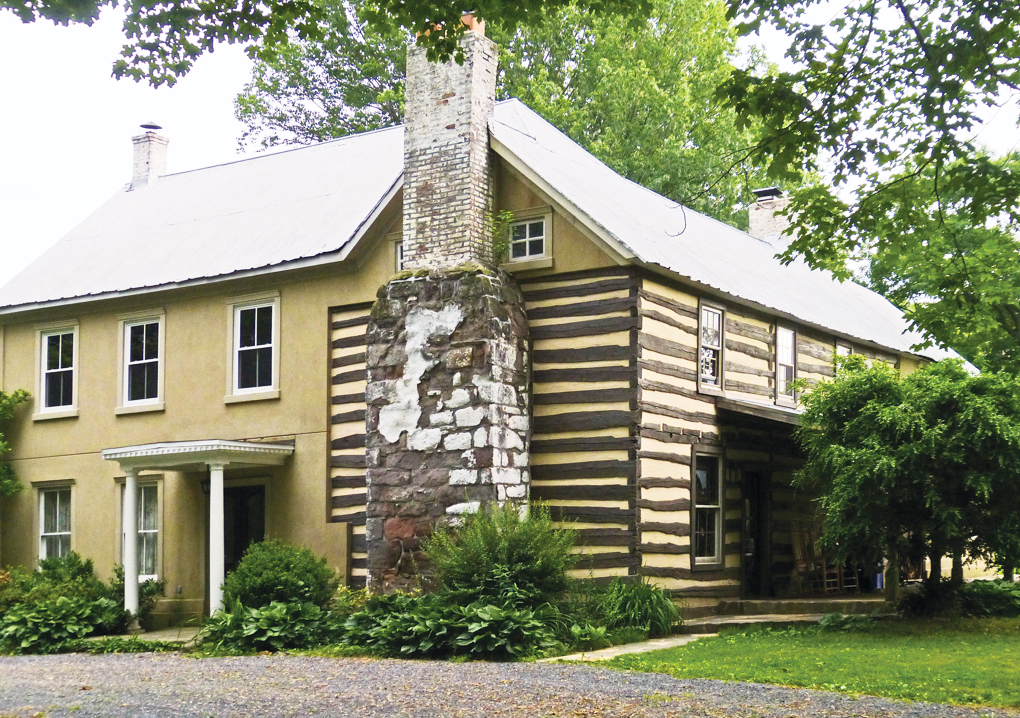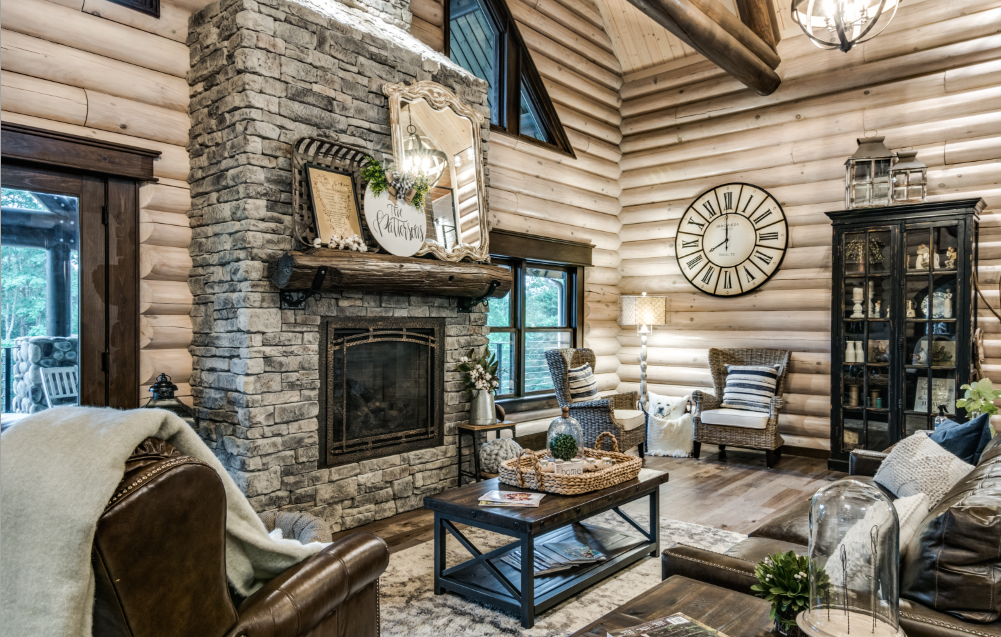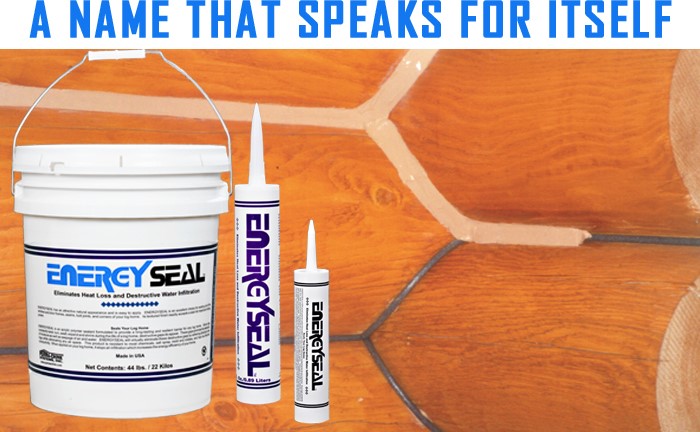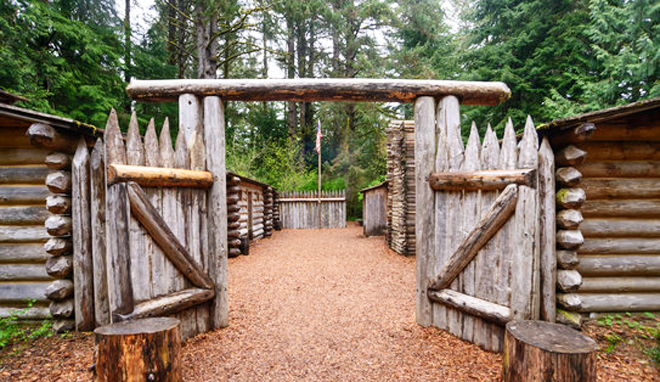 Perma-Chink Systems, Inc
Log & Timber Home Care Experts
Perma-Chink Systems, Inc
Log & Timber Home Care Experts
As our country was founded, established and expanded, log homes were prevalent across the colonies. President Abraham Lincoln was famously raised in a log home, and that home is still preserved today. Some of our greatest presidents came from humble beginnings and modest homes. What some people might not know is a log home constructed in 1808 was built on George Washington's Farm. 
One of the key bits of information for keeping hardwood floors shiny is knowing what type of finish has been applied to the wood. Was your hardwood sealed with a polyurethane or polyacrylic urethane finish, or was it finished with a paste wax? If you don't know, here's a test to help you make the best cleaning choices:
-
In a spot with normal foot traffic, place a drop of water on the floor. If the water is quickly absorbed or causes spotting on the finish, this indicates the hardwood has not been sealed and should never be cleaned with water. But if the bead of water just sits on the surface without being absorbed, it means the hardwood floor has been sealed.
-
To test for a paste wax finish, grab some fine steel wool and rub it lightly over the floor in a corner. If the floor has been waxed, there will be a gray, waxy film left on the steel wool.
COLOR CHOICES FOR LOG OR TIMBER INTERIORS
When it comes to log and timber homes, grays and browns are the biggest trending colors, as they offer the widest neutral tones. Gray has been the hot shade for the past several years in homes, from walls to floors.
True to its "neutral" title, gray really goes with almost any color. The key to a great match lies in coordinating the tones. Gray doesn't have to appear in your palette as a color of the wall - it can also be found in a fireplace exterior, flooring, or on countertops. When you add gray to any room, be sure to consider other shades of gray that might already be there.

Lower Your Energy Consumption and Prepare Your Home for Winter
From the Experts at Perma-Chink Systems
As winter approaches, one of the most important tasks for maintaining your log home is ensuring it’s properly sealed. With the cold months ahead, taking the time to address any gaps and cracks will help prevent cold drafts and keep your home cozy and energy-efficient.
In today's world of rising fuel costs and growing environmental concerns, keeping cold air out and warmth in has never been more important. A well-sealed home reduces your energy consumption, helping you save money while also minimizing your environmental impact.
Start Saving on Your Heating Bills Now!

Energy Seal is a textured acrylic polymer sealant that provides a long-lasting and resilient seal for any style of log home. Since logs constantly twist, turn, swell, expand and shrink, gaps may appear between logs or between the logs and window and door frames or other areas of the home. These gaps retain moisture and allow the seepage of air and water into the home. Energy Seal eliminates these gaps by forming an air and water tight barrier over them.
Finishes & Stains
Calling our pigmented finishes “stains” can be a bit confusing, but we understand how finishes can be called a stain. The term “stain” implies that the wood fibers are stained with the colorants contained in the products. However, in the case of film-forming water-based finishes, like our LIFELINE™ family of finishes, the wood fibers are not impregnated with the colorants. Our LIFELINE finishes behave more like latex paints than penetrating oil-based stains. Yet we can refer to our finishes as stains or varnish since that is what the market is used to. Our newest finish, Log & Timber Defense, is a semi-transparent finish that penetrates like oils, but without the negative effects of oil-based stains.

When I was growing up, I was fascinated with forts. I would often get together with friends from the neighborhood, and we would combine our resources and construct some rather elaborate fortresses. To test our handiwork we would end our session with a great battle to decide whose fort was superior. Fast forward nearly forty years and I am still helping design forts! At Perma-Chink Systems the forts we are building are designed to protect your home against the forces of nature such as sunlight, wind, rain, dust, insects, and microorganisms. Let us take a closer look at what our fort looks like.
Why do my choices regarding surface prep, stain, and color matter?
When it comes to choosing a finish system for your log home exterior, there are many factors to consider. Depending on what choices you make, it will have a significant impact on the longevity of the finish system. For example, some of these choices include surface preparation, type of stain, and color choice. Let us take a closer look at each one of these factors and discover how they each contribute to a systems performance.
Wood Renew™ - To pre-wet or not to pre-wet?
Fairly often we get questions about Wood Renew™ with reference to whether or not to wet the surface before application. First, I would refer to the label directions as to use and application. There is no mention of the need to wet the surface prior to application. However, there is mention of proper pre-mixing and allowing a bit of “dwell” time prior to application. This dwell time allows the thickeners to activate and aid in helping it to stay on the wall so it can do its work for better results.
Spring Cleaning! Steps to Prolong the Life of Your Log Home
Every Spring life begins anew. Flowers bloom, trees blossom, and the grass grows thick and green. The springtime is the perfect time to clean and start fresh! Log homes have their own cycles of maintenance, slightly different than a stick-built home. We have found that in the springtime, it's an excellent time to get things ready for the summer and shake off the wet fall and winter.
We will walk you through our recommended process to ensure your home keeps looking great for a long time. From cleaning to inspection to evaluating your log home's finish, we'll prepare you with a system that's easy to follow.